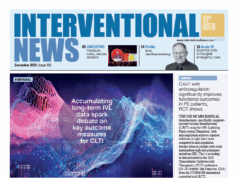 Data from the European Board of Interventional Radiology (EBIR), as presented by O M van Delden at the Cardiovascular and Interventional Radiological Society of Europe (CIRSE; 22-25 September, Lisbon, Portugal) reveals that only 8% of EBIR-holders and 10-20% of CIRSE members are female.
Data from the European Board of Interventional Radiology (EBIR), as presented by O M van Delden at the Cardiovascular and Interventional Radiological Society of Europe (CIRSE; 22-25 September, Lisbon, Portugal) reveals that only 8% of EBIR-holders and 10-20% of CIRSE members are female.
This gender gap in interventional radiology (IR) has recently been attributed to “imposter syndrome.” Speaking to the CIRSE audience, Tze Min Wah, a consultant radiologist at the University of Leads, UK, said that in relation to IR, imposter syndrome has become a global phenomenon, affecting both males and females. However, this feeling of inadequacy despite evident success is likely to occur more in the underrepresented group of women involved currently in IR.
In relation to overcoming this imposter syndrome, Wah suggested that recognising its existence, mentoring schemes and peer support will be beneficial. Further addressing the gender gap in IR, van Delden pointed to how the EBIR can promote women in IR, as female EBIR-holders and contributors can be role models for IR.
Furthermore, Anna Maria Belli, who was earlier awarded the Gold Medal for her contribution and “fundamental source of inspiration for female IRs though her active leadership role”, alluded to a worldwide misconception involving the perceived dangers of performing IR procedures during pregnancy. She pointed out that although there is sufficient evidence present in the Annals of the International Commission on Radiological Protection that suggests that working in IR during pregnancy is safe, the perception of radiation dangers continues to prevail.










